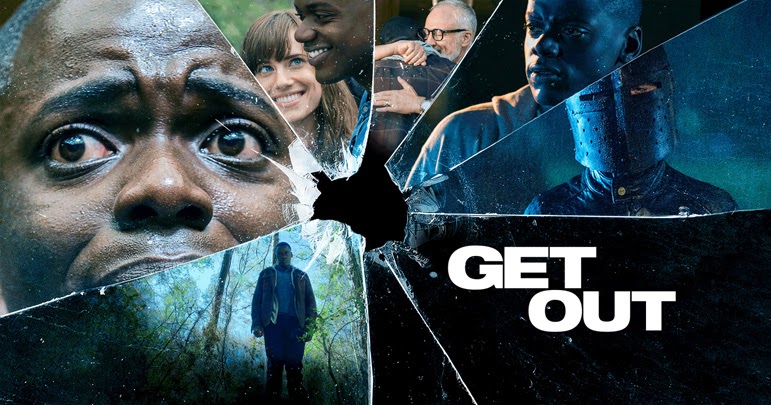

Spoiler-free article!
The premise of this movie is simple enough — perhaps that is the first of its strengths. The audience finds the protagonist Chris packing his things, playing cute with his girlfriend Rose and preparing himself to meet his girlfriend’s parents. Along the journey home, the movie leaks countless hints that Rose’s parents possess little to no sense of racial sensitivity. But they mean well, Rose insists. Chris, despite his misgivings, goes along with her to the Armitages’ home. Assuredly, almost every facet of the neighborhood pricks him with varying degrees of regret. But Chris discovers that he is not the only black person in the vicinity. What’s more, everything about the black people living in and around the Armitages hints at something sinister; staying seems to become a worse option by the hour.
Summer seems to have come early this year. While the weather outside may give no such indication, it is a little difficult to see a yearly blockbuster overtaking the sheer excitement and adulation surrounding Jordan Peele’s dazzling directorial debut “Get Out.” And that praise is well-deserved. There is a finesse to “Get Out” that sets it apart from its springtime peers. What is surprising is that it is a different kind of finesse than the one that governs Peele’s excellent comedy work. Of course, the unfaltering idea that unites “Get Out” and Peele’s career in comedy is the idea of American blackness in the 21st century. But the approach is markedly different here. As a comedian, Peele has always had a collaborator in the form of Keagan-Michael Key. With Key, Peele, in writing, production and performance, was always playing a role in the bigger game of the sketch. In his sketches, Peele’s individual comedic vision never wielded the kind of clout it does in the film. What’s more, in Key & Peele, the humor and social commentary took on the affect of immediacy and improvisation, even when they were meticulously planned. The duo’s well-known East/West College Bowl sketch exemplifies this. The skit has a simple form: list the all-stars of the East, list the all-stars of the West, alternate between Key and Peele. What was funny about the sketch, then, was the torrent of increasingly ridiculous names Key and Peele would conjure up. As one relentlessly followed the other, the skit fit neatly into the praiseworthy ranks of their quick-footed comedy work.
The absence of Key or a Key-figure coupled with the fact that a film could not, by definition, proceed as one of their skits was the biggest hang-up I had going into the theater. But instead of being a disappointment, it served as a scab that was oh-so-refreshingly Peele-d off, and after that point I was laughing like every other person in my packed theater. What impresses most about “Get Out” is how its director so gracefully substitutes his honed powers from his career thus far. Gone is the duo and their speedy wit; enter the delicate emphasis on symbols. Peele adeptly plays with meaning and its objects throughout the movie. One such symbol (which does not stray into juicy spoiler territory) is the deer. On his way to the Armitages, Chris crashes into and kills a deer. Shocked, he stares at the deer, helpless to do anything. Rose cautiously and lovingly nudges him away, and the audience is led to conclude that the incident was mere digression. But in this brief scene, Peele introduces the single image of a dying animal entangled in two strands of distress, that of the dying deer and the living man. The former eventually engulfs Chris in the latter half of the film, and the deer becomes a potent symbol of the threat thrust upon black people, within and outside of the story. The latter stays with Chris and foreshadows a more personal trauma that develops in the margins of this airtight script, which intersects with the aforementioned general horror and clarifies the emotional stakes of the darker parts of the movie. All this from a single scene — although it is not the only such scene, and all the more praise should be accorded to them.
“Get Out” is not a cold, cerebral experience. One experiences it with a beating heart, and later with splitting sides when a particular friend working for the TSA shows up. Daniel Kaluuya submits an admirable performance, taking the aggressions of his world at a poker-faced stride. But Lil Rel Howery steals every scene he is in and more, since some of his lines still evoke laughter in hindsight. Humor really is Peele’s home ground, and the comedian-director makes every shot count with the actor. It’s all the more impressive when the jokes and the commentary mingle by the climax. The last bend to that final station has a few bumps: namely, the resolution seems to aim for catharsis but paces itself too quickly to make each moment of it count. But even that is worthy sacrifice to experience the absolute, tail-end climax of the movie, a masterstroke that fuses the meditative excellence of form and the madcap comedy of TSA agent Rod Williams. One would say it makes the whole movie worth it, but in truth it’s satisfying because it builds off the rest of the expertly crafted piece. There isn’t much dilly-dallying to be had here. Get out and watch the movie.